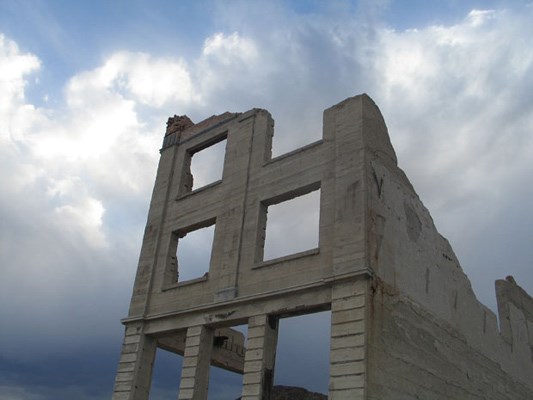There are two kinds of people in the world: those who love Las Vegas and those who can't stand it.
I thought I fell into the latter group until recently, when I learned there's way more to Nevada than shopping, shows and the neon lights of the casino-addled Strip. The Nevada desert is a place of beauty, colourful legends, wildlife and handsome cowboys.
You don't have to drive far to find yourself surrounded by shimmering mountains, red-hued canyons and perfect silence.
The moment you leave The Strip, the state begins to reveal its true face - one without the heavy coat of makeup it wears on Las Vegas Boulevard.
Just outside of Vegas, for example, lies 1.2 million acres of desert wildlife refuge, part of which is the Red Rock Canyon. You know you've arrived there when creamy brown mountain ranges give way to a startling red, as if a child had coloured a solid line of rusty red through the mountains.
On horseback, you get a close-up look at the desert and the life it contains. We saddle up with two cowboys for a trail ride on a path that snakes its way up the mountainside. Burros, or wild donkeys, eye our procession of horses warily from a distance, and a pair of hawks screech as they dip and dive into the canyon below us. With the wind in our ears and the gentle undulation of obedient horses beneath our hips, The Strip feels light years away.
Determined to experience some of Nevada's history, we hit the road, driving a couple hours northwest of Vegas. Along the way we pass mines, many abandoned but some still operational. Those desert hills and mountains are home to a wealth of mineral resources, including gold and silver deposits. When those mines exhausted their supply, though, the towns built to support them dwindled to nothing but rubble, memories and ghosts.
Rhyolite is a perfect example, and as we step around the ruins of the town founded in 1905, it's hard to imagine it as a bustling home to 8,000 people. They came after gold was discovered in the nearby Bullfrog hills, and built hotels, banks and homes serviced by electricity and water,
But just as fast as it had opened, the gold mine closed. When the last resident died in 1924, the wind began to whip around the railroad station and reduce the buildings to rubble. Today the only full-time residents are the ghosts.
There are 14 of them in total, standing with hooded faces and gesturing arms at the Goldwell Open Air Museum, a sculpture museum on the outskirts of Rhyolite. Created by a group of prominent Belgian artists, these spooky sculptures capture the desolation and despair of a town reduced to dust.
We drive onward into Death Valley National Park, marveling at the beauty of its five mountain ranges. Alongside the highway the hills are full of colour: knees of cream give way to creased thighs of red, orange and brown. It's a hot place where eggs can fry instantly on the sidewalk in the summer, and mystery abounds.
Interpretive ranger Bob Greenburg tells us about Death Valley's sliding rocks, a mystery of movement that continues to stymie and perplex to this day. On a dry, clay lake bed, 100pound rocks move inexpli-cably every couple of years, leaving a clear trail in their wake. "We know the wind somehow moves them, but we can't figure out what the lubricant is," Greenburg says.
As we venture deeper into the Mojave Desert, it becomes clear there's a wealth of bizarre stories crackling like static in the hot, dry air. Scotty's Castle is one of them, a stately Spanish-style mansion with lavishly decorated rooms.
On the last stop of the tour an organ in the music room fills the air with joyous sound. There's music, myth and beauty in Nevada's Mojave Desert, it proclaims. You just have to step away from The Strip to discover it.
Travel Writers' Tales is an independent travel article syndicate that offers professionally written travel articles to newspaper editors and publishers. To check out more, visit www. travelwriterstales.com.



